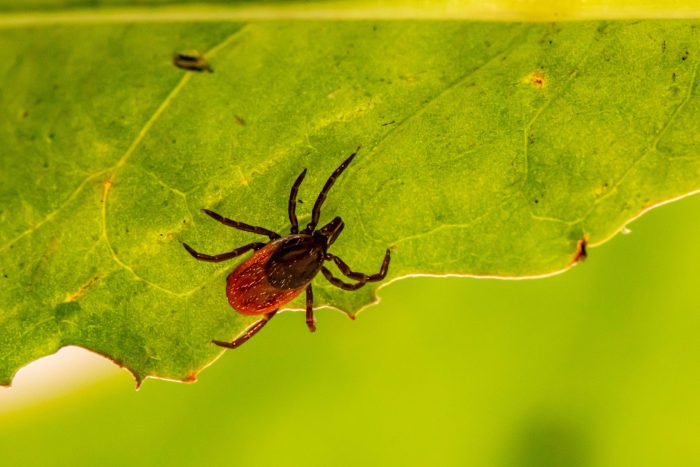What to expect this tick season
After an unexpectedly mild winter and an early insect emergence in early spring, many residents of Northern Minnesota have been concerned about what kind of tick and mosquito activity the warmer months will bring.
Dr. Jon Oliver is an Assistant Professor in the Division of Environmental Health Sciences at the University of Minnesota. He studies vector-borne illnesses, specifically diseases transmitted by ticks and mosquitoes. He spoke with WTIP about the risks that insect bites can pose.
Oliver said that preventing insect bites is key. However, if an individual is bitten by a tick, prompt removal is the most important thing. For Lyme disease, this is especially important, since in the first 24 hours that a tick is attached, it is unlikely to transmit the disease to a human. Because of this, frequent tick checks are valuable in preventing an attached tick from passing the disease to a person. In the case of mosquitoes, since the bite and transmission is much faster, preventing the bite is the priority.
Cook County Public Health and Human Services (PHHS) provides insect bite prevention education each year. Public Health Educator Andrea Tofte told WTIP that there are several ways that people can avoid tick bites. She recommends clothing with ample skin coverage, and the use of bug repellent. She said that there is a wide range of repellents available, ranging from DEET-based sprays to natural options like lemongrass oil. The Environmental Protection Agency has a tool on their website for looking up effective repellents that are also EPA certified safe.
Tofte also said that for people who have been bitten by a tick, being able to identify the species of tick is important. She said that the main tick species of concern in Minnesota is the deer tick. Deer ticks are the only species in the state that transmits Lyme, and that most of the other tick-borne illnesses also come from deer tick bites. If someone who has been bitten by a tick can identify the species, they can make a more informed decision on whether to seek medical advise, or whether to be on the lookout for the flu-like symptoms and characteristic rash that accompanies Lyme disease.
While Minnesota has always had some ticks, Oliver explained that there has been a sharp increase in the tick populations of various species. He said that in decades past, deer ticks were extremely rare in the state. Milder winters and a changing climate have contributed to the movement of tick species across the entire country. Oliver said, that, more than any other reason, he sees the spread of tick species like the deer tick or Lone Star tick as the result of humans changing the landscapes in which they live.
As far as this year is concerned, Oliver predicted that it would be a strong year for the tick population. He said that emergences were documented as early as February, and that the especially mild winter would likely mean that many ticks survived the colder months. Much like Tofte, Oliver emphasized the importance of preventing tick bites, and seeking medical attention at the first signs of illness.
WTIP’s Kirsten Wisniewski spoke with both Dr. Jon Oliver, an environmental health scientist at the University of Minnesota, and Andrea Tofte, a public health educator from Cook County Public Health and Human Services. Audio from both of those interviews is below.














